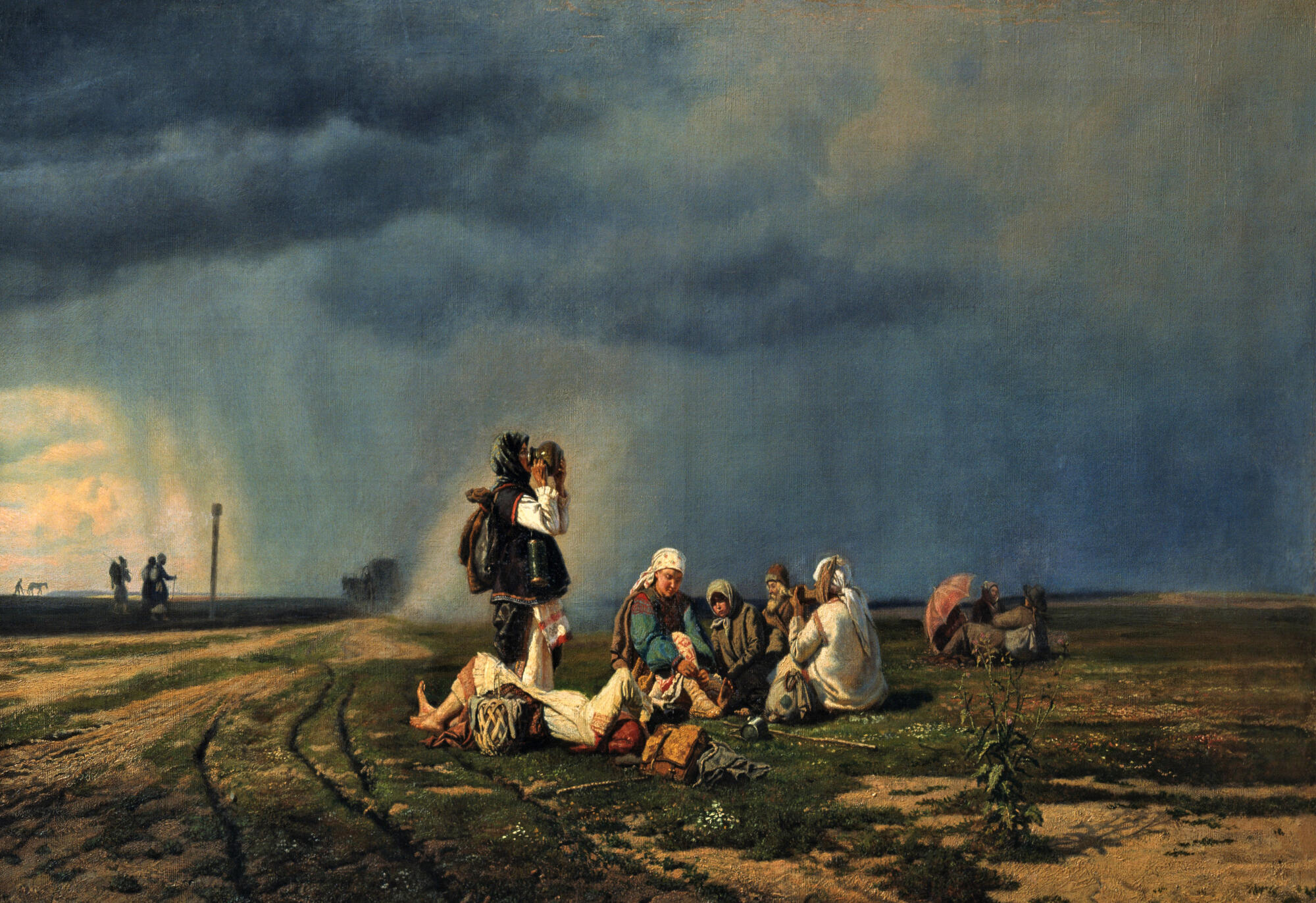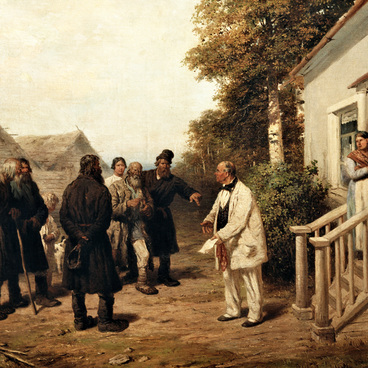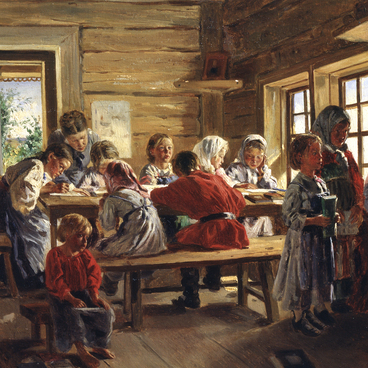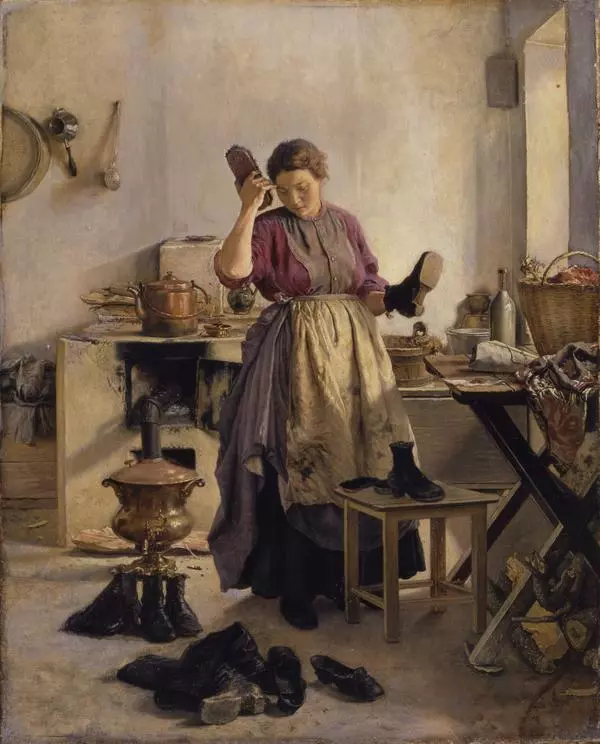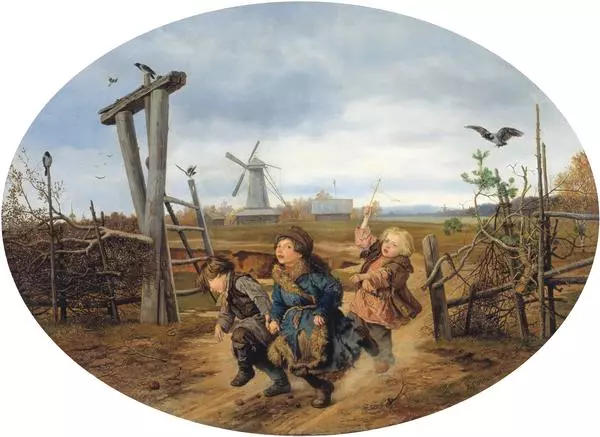Andrei Popov was born in October 1832 in Tula. His grandfather and uncle were local icon painters in the Tula province. His father was also an artist and taught his son painting from early childhood. Family traditions were so strong, and the boy’s gift was so apparent that he soon found himself a patron, Mikhail Yazykov. He entered the Imperial Academy of Fine Arts in St.Peterburg at his insistence and studied in the landscape class with the most prominent artist academician, Maxim Vorobyov.
Popov enthusiastically worked a lot, and Already in the early 1850s, he turned to genre scenes in his paintings and sketched from nature. There is no satire in these paintings. They are imbued with love for ordinary people.
The painter presented his “Pilgrims” at the exhibition of 1861 at the Academy of Arts, receiving many enthusiastic reviews from critics and recognized masters of painting. The young artist was also awarded several student medals during his training period: five silver and three gold medals. Having received an award at the Academy of Arts for his “Pilgrims”, Popov went abroad for three years. He visited Germany and Belgium and became acquainted with the works of famous artists in museums. He spent a lot of time in Paris and Rome, where there were many Russian artists.
In “Pilgrims”, there is a simple sketch of peasant life in front of the audience. Among the bare steppe, women making a pilgrimage stopped to rest. On the horizon, there are substantial black clouds gathered over the steppe. The wind is blowing a pillar of dust along the road, and a thunderstorm is approaching fast. The artist painted in detail the faces of women, their positions, details of the clothing, demonstrating excellent knowledge of Russian folklife.
Andrei Popov often visited his hometown of Tula, its surroundings, and probably more than once observed the Pilgrims’ procession to the Kiev-Pechersk Lavra. If you look carefully at the embroidered patterns on the women’s clothes and the color of the threads, you can assume that the peasants are natives of Tula or Kaluga Governorates. This type of costume is typical for the southern regions of Russia.
Popov enthusiastically worked a lot, and Already in the early 1850s, he turned to genre scenes in his paintings and sketched from nature. There is no satire in these paintings. They are imbued with love for ordinary people.
The painter presented his “Pilgrims” at the exhibition of 1861 at the Academy of Arts, receiving many enthusiastic reviews from critics and recognized masters of painting. The young artist was also awarded several student medals during his training period: five silver and three gold medals. Having received an award at the Academy of Arts for his “Pilgrims”, Popov went abroad for three years. He visited Germany and Belgium and became acquainted with the works of famous artists in museums. He spent a lot of time in Paris and Rome, where there were many Russian artists.
In “Pilgrims”, there is a simple sketch of peasant life in front of the audience. Among the bare steppe, women making a pilgrimage stopped to rest. On the horizon, there are substantial black clouds gathered over the steppe. The wind is blowing a pillar of dust along the road, and a thunderstorm is approaching fast. The artist painted in detail the faces of women, their positions, details of the clothing, demonstrating excellent knowledge of Russian folklife.
Andrei Popov often visited his hometown of Tula, its surroundings, and probably more than once observed the Pilgrims’ procession to the Kiev-Pechersk Lavra. If you look carefully at the embroidered patterns on the women’s clothes and the color of the threads, you can assume that the peasants are natives of Tula or Kaluga Governorates. This type of costume is typical for the southern regions of Russia.
